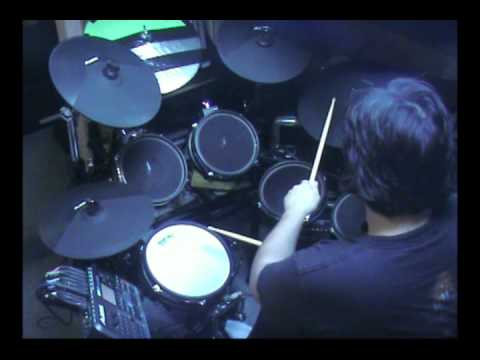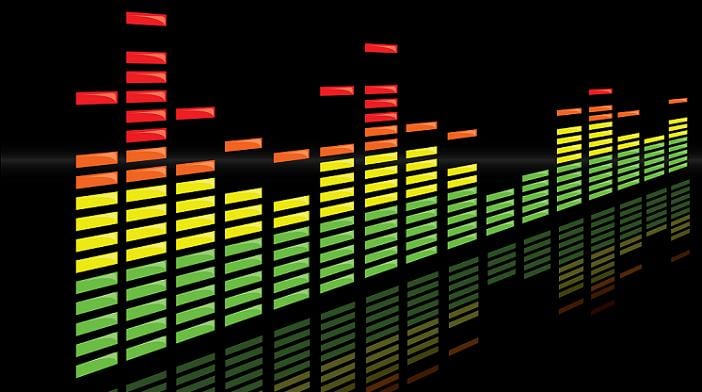 Screencap via youtube.com
Screencap via youtube.com
You’ve piled up a stack of microphones, cables, and stands. You’ve run wires all over the floor until your studio looks like Laurence Fishburne’s ship in The Matrix. You’ve tweaked knobs and listened to your headphones while your drummer patiently plays his kick drum for 15 minutes, and now you’re finally ready to say, “Okay, let’s hear the whole kit!” You’ve got a good, clean sound, but why does it sound so thin? Where are the guts? Where’s the power?
One of first things that brands a recording as “local” is a thin, weak drum sound, and you’ll have to solve that problem if your band has any aspirations to be hard or heavy. Here are a few tips to get that deep, propulsive drum sound you’re looking for.
1. Make sure the kit is solid
A drum set is like a truck frame. When the frame is solid, the truck rides and responds like a dream, but when the frame is shaky, it wallows and weaves. Your drum set should be locked down tight, with no pieces swaying around and no bass drum creep.
Do whatever it takes to make sure everything is rock solid and tightened down. This could also mean swapping out cheesy snare and cymbal stands for heavier, higher-quality units. Although your drummer won’t admit it, there’s only so much energy that can come from a player’s muscles. Make sure all of that power is channeled into hard hits, not dissipated by drums that shimmy and shake.
2. Record your drums in the right spot, in the right room
Whether you’re in a pro studio or the living room of your uncle who’s out of town, make sure the drums sound great in the room before you go crazy with mics and mixing. If you’re not crazy about the studio drum tone that the engineer just loves, don’t be afraid to insist on trying something else. Move the set into the bathroom. Take the set off of risers and move it to the floor. It’s your dime, and it should be your sound.
3. Remove weak links in your microphone chain
Listen to each input on your mixing board. Does each mic actually sound good? Many manufacturers sell drum mics as a set, with useful features such as hardware to clip the mic directly onto a snare or rack tom. Some of these microphones have cheap diaphragms and won’t give you a great sound no matter what sweet set and brilliant drummer are in the next room.
Even if you’re getting a great sound on the snare and kick, a massive drum roll over toms that sound like cardboard will undermine what you’re trying to do. If there’s a bad mic on your kit, toss it and buy, beg, or borrow something simple and reliable like a Shure SM57. Those things can sound good on anything, and many amazing pro recordings have been made using nothing else.
[How to Break the Rules of Mic Placement for Better Recordings]
4. Don't be afraid to overmix the snare and kick
While you’re going for a full drum sound, your bass player is plugging in a distortion pedal and your lead guitarist is playing three octaves below on her new Strandberg nine-string. That sweet, pillowy kick-drum sound you just mixed is about to get buried under 13 strings of fuzz and three octaves of keyboard.
Don’t be afraid to mix the kick out front before tracking more instruments, even if it sounds too loud when you’re just listening to the drums. If listeners can’t hear and feel the kick drum, your music will be categorically unable to rock.
5. Try running a couple of mics through a bass guitar head
Sounds crazy, but if you have a spare mic or two, run them through a bass amp, especially a tube head, to get a little overdrive on those drums. You can mix to taste, adding a little crispy distortion as necessary and bolstering your sound. But don’t try this with a guitar amp; it can’t handle the low frequencies and will give you a tinny sound, so stick to the bass rig unless you’re an experimental act that specializes in treble.
6. Use orchestration
If your song sounds thinner than you remembered in rehearsal (or onstage), it may not just be the drums. Analyze the relationship between the bass guitar and the drum set. Could the bass player do more to match the drummer’s beat? Music is a team sport, and sometimes individuals only sound their best with support from the other players.
Parts tend to change and get more complex over time. Maybe all you need to make your drums sound huge is to return to a slightly simpler, more massive bass part. It could be the missing ingredient to that full, powerful sound.
Next up: 5 Tips Every Musician Needs to Better Prepare for a Recording Session
Jesse Sterling Harrison is an author, recording artist, and part-time farmer. He lives in Massachusetts with his wife, three daughters, and a herd of ducks.







